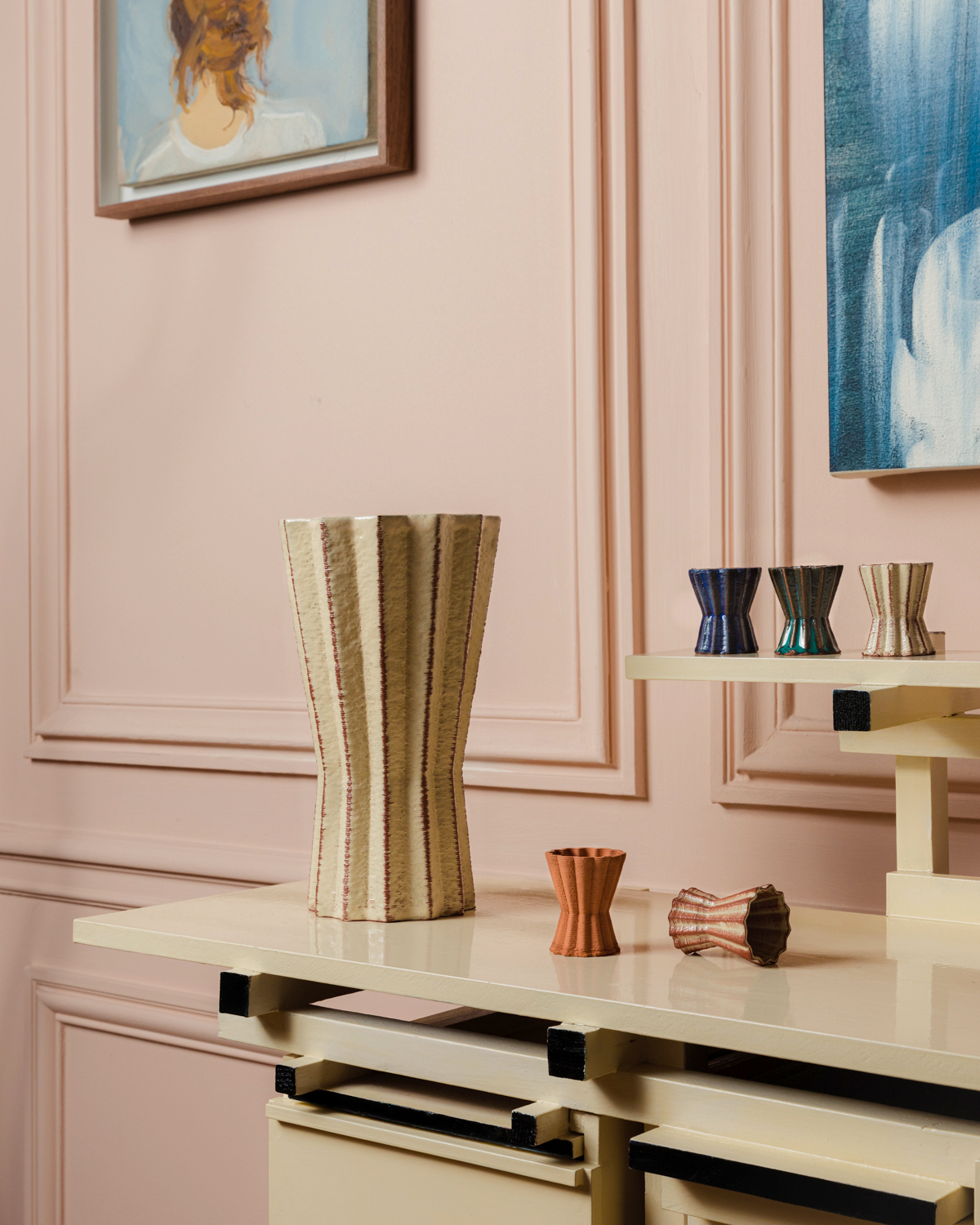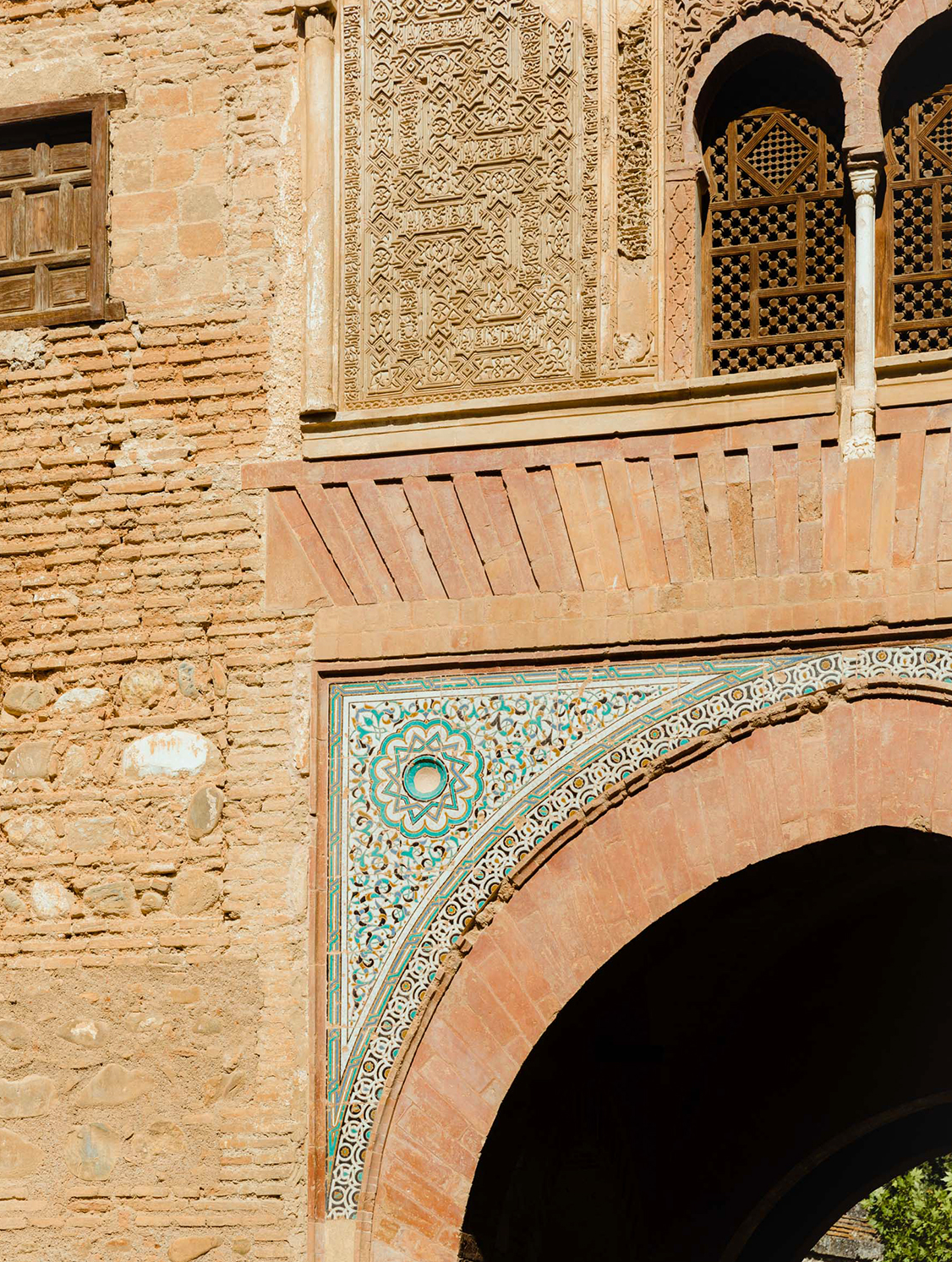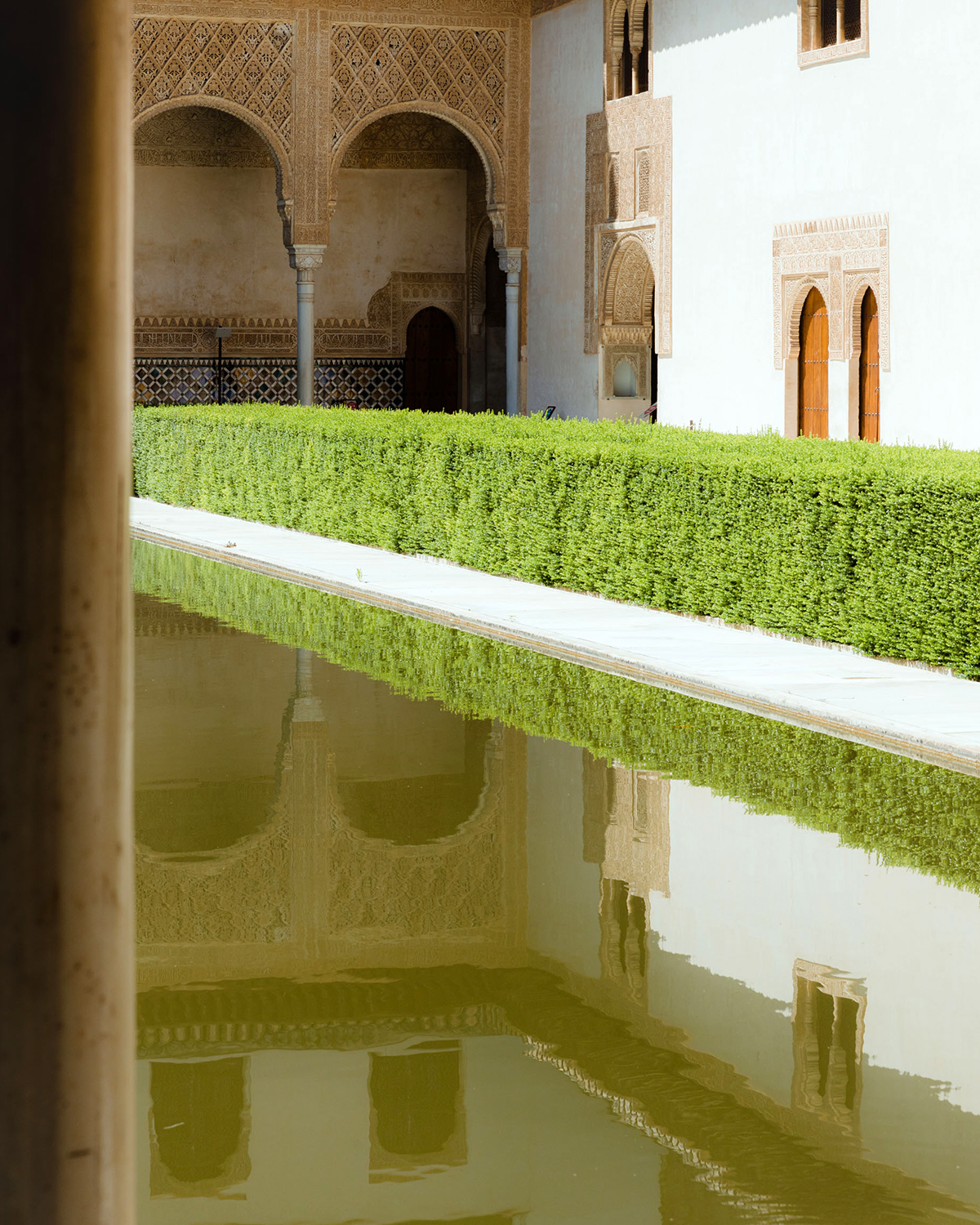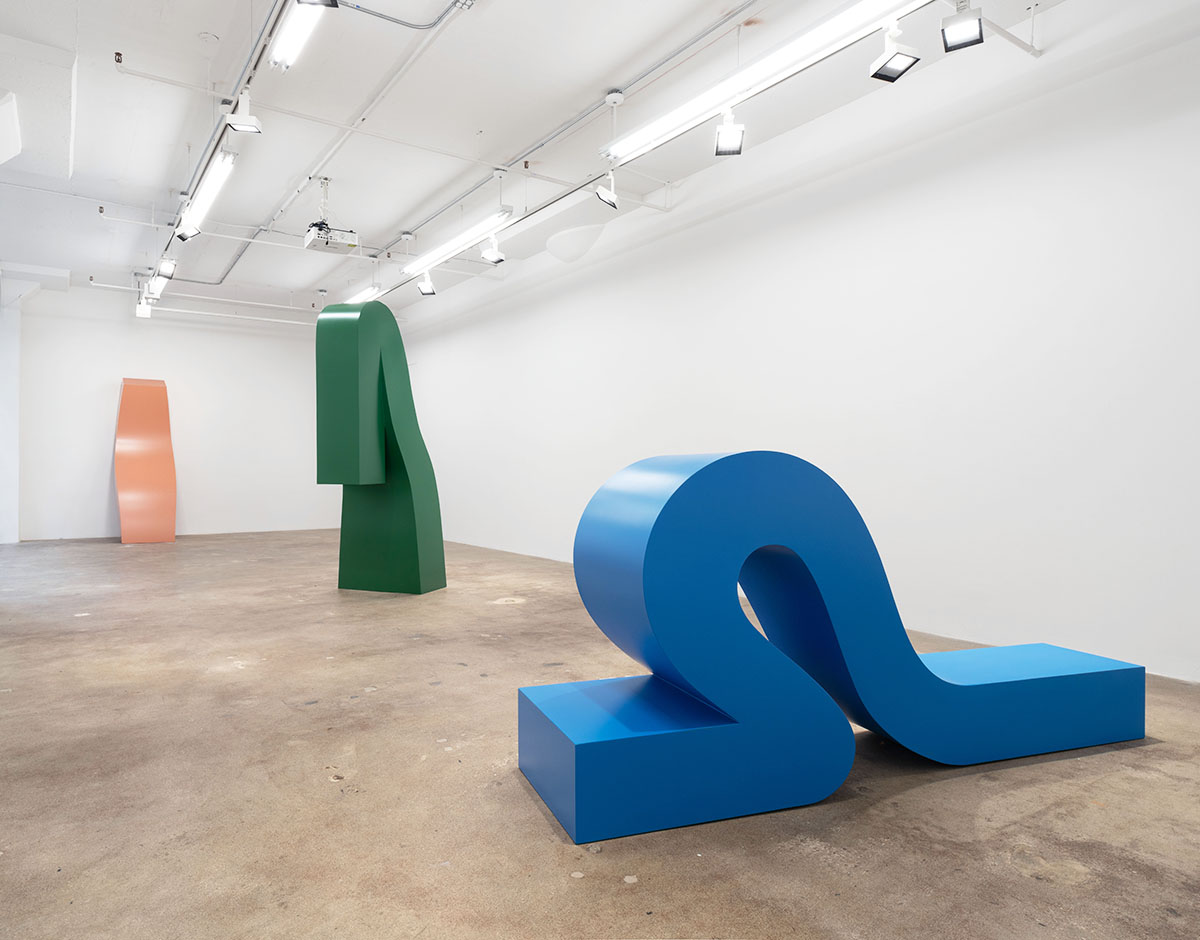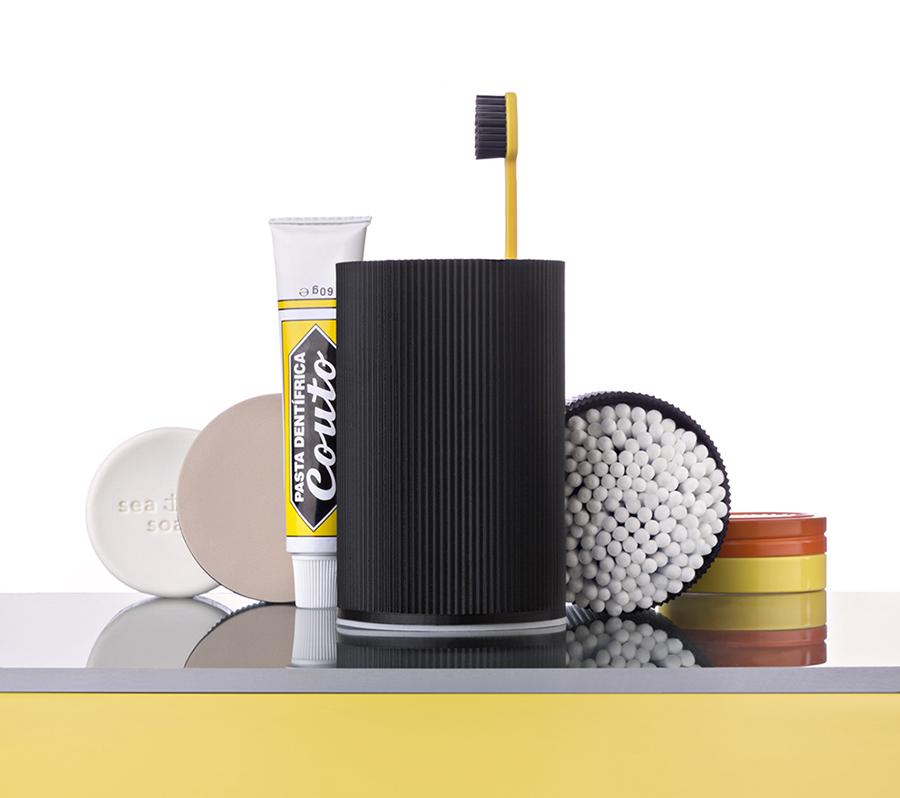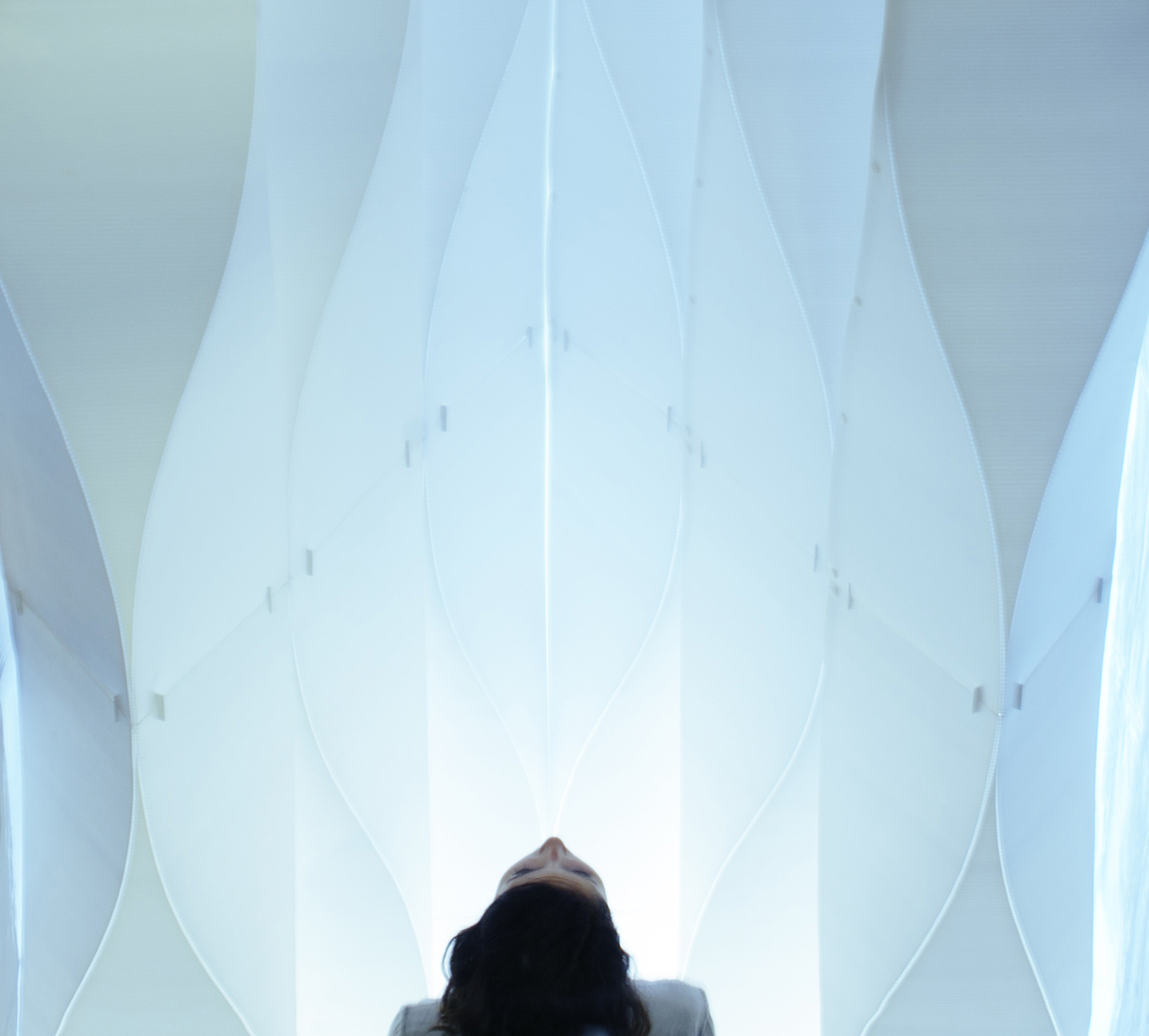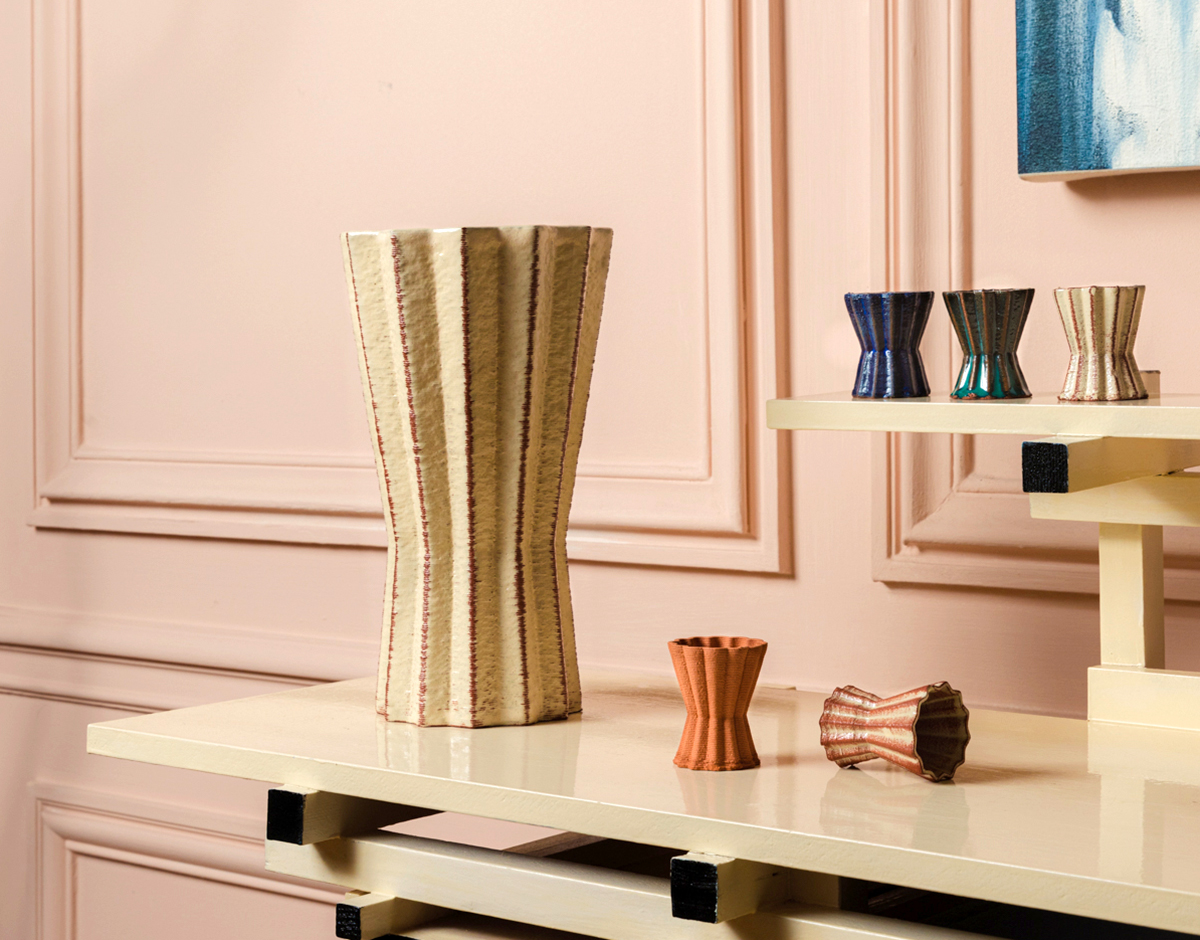
04.07.22
Q+A
This Housewares Brand Thinks the Future of Design Lies in Uniting 3D Printing With Contemporary Talents — and Traditional Artisans
Back when we were editors at ID Magazine, in the early 2000s, we had our fair share of encounters with 3D printing, as we watched schools make rapid prototypes from hideously textured plastic, and industrial producers proudly show off ambitious puzzle-like sculptures, created in collaboration with designers, that had little going for them beyond their exaggerated technical complexity. Twenty years later, through advancements that have allowed for more affordable machines, better materials and finishes, and faster results, the technology has finally started to come into its own, making the dream of an on-demand manufacturing industry — one that yields products people might actually want — feel closer at hand than ever. That’s the realization that inspired cousins Ismail and Adnane Tazi, who founded the Parisian housewares brand Trame in early 2020, to rethink their entire approach to production just two years later, culminating in the launch of their new Alhambra.gcode collection, pictured throughout this story.
When we first featured Trame, back in January of 2020, the company was focused on championing the handicraft traditions that the cousins grew up around in their native Morocco, where their great-grandparents were ceramic and textile craftsmen. Dismayed at how, despite a surging interest in Moroccan artisanship, they didn’t see much innovation coming out of it, they devised a business plan for Trame that revolved around bringing contemporary designers on inspiration trips to areas with strong craft traditions — like Fez, Morocco, and Calabria, Italy — and then producing the ideas that came out of those trips with local materials and makers. That process yielded products like their popular Seminara masks and Entwine rugs. But in the meantime, they’d become fascinated with the possibilities of 3D printing, and the overlap they could achieve between the two ideas by using the group trips for more general cultural and decorative inspiration, then 3D printing the ensuing designs and hand-finishing them to ensure that each object would be slightly different — and hew to the founders’ original motivations.
So for the new Alhambra.gcode collection — the first three products of which launched in Trame’s online shop yesterday, with more to come both next month and at the Alcova show in Milan this June — they took designers Wonmin Park, Amandine David, and Arthur Mamou-Mani to Granada to visit the historical Alhambra fortress. They let the trio bask in the ideas and visual motifs they encountered, then produced their vases, cups, and candleholders in 3D-printed clay, and finally had those objects hand-glazed in ways that both highlight and undermine the technology behind them. The Tazi cousins fervently believe that if more companies can manage to marry 3D printing with high-end contemporary design in this way, it can usher in a whole new era of sustainable goods that are printed on-demand, closer to both their materials sources and their customers, and with less waste at all stages. We spoke to Ismail about that future vision, and Trame’s new direction, below.
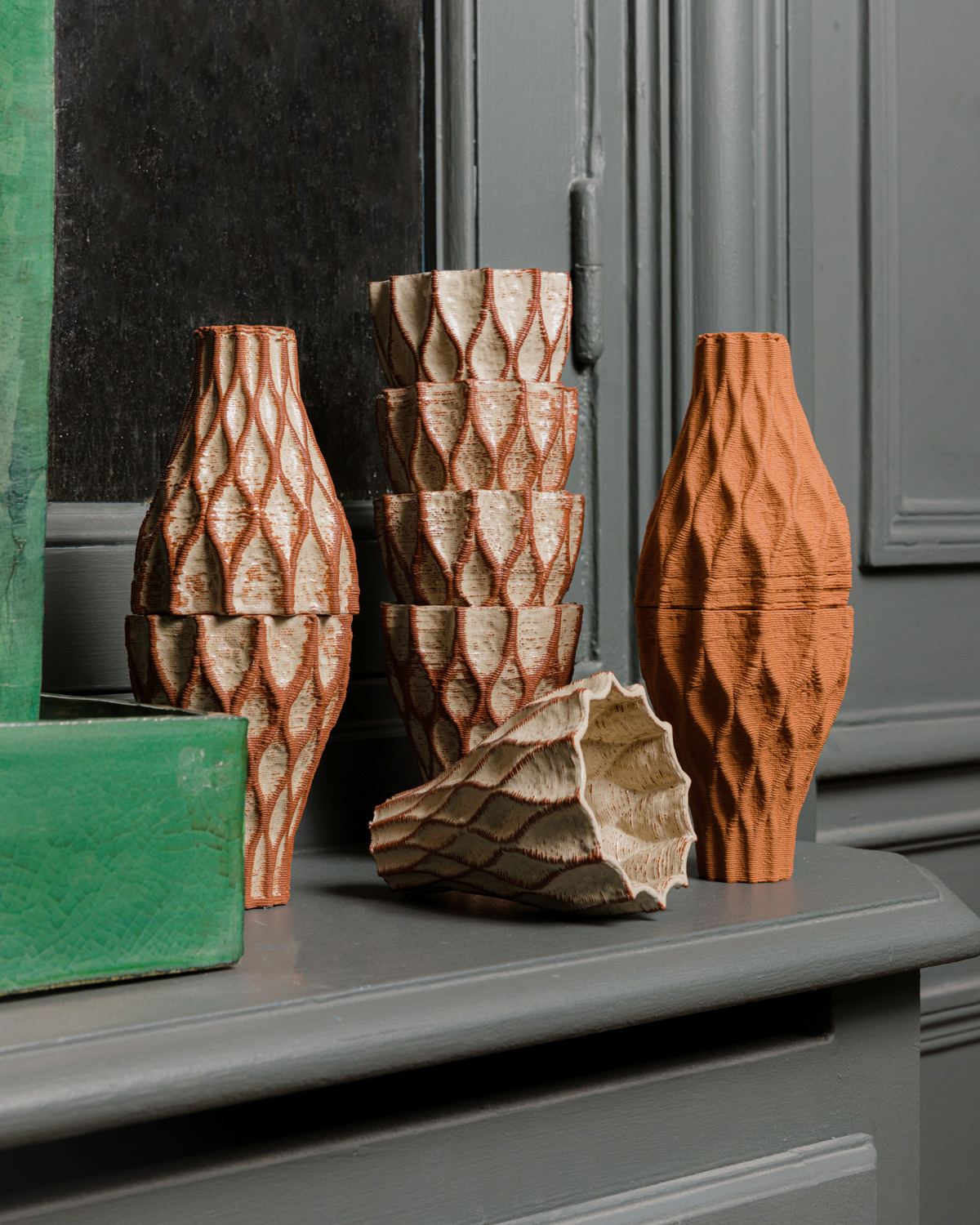
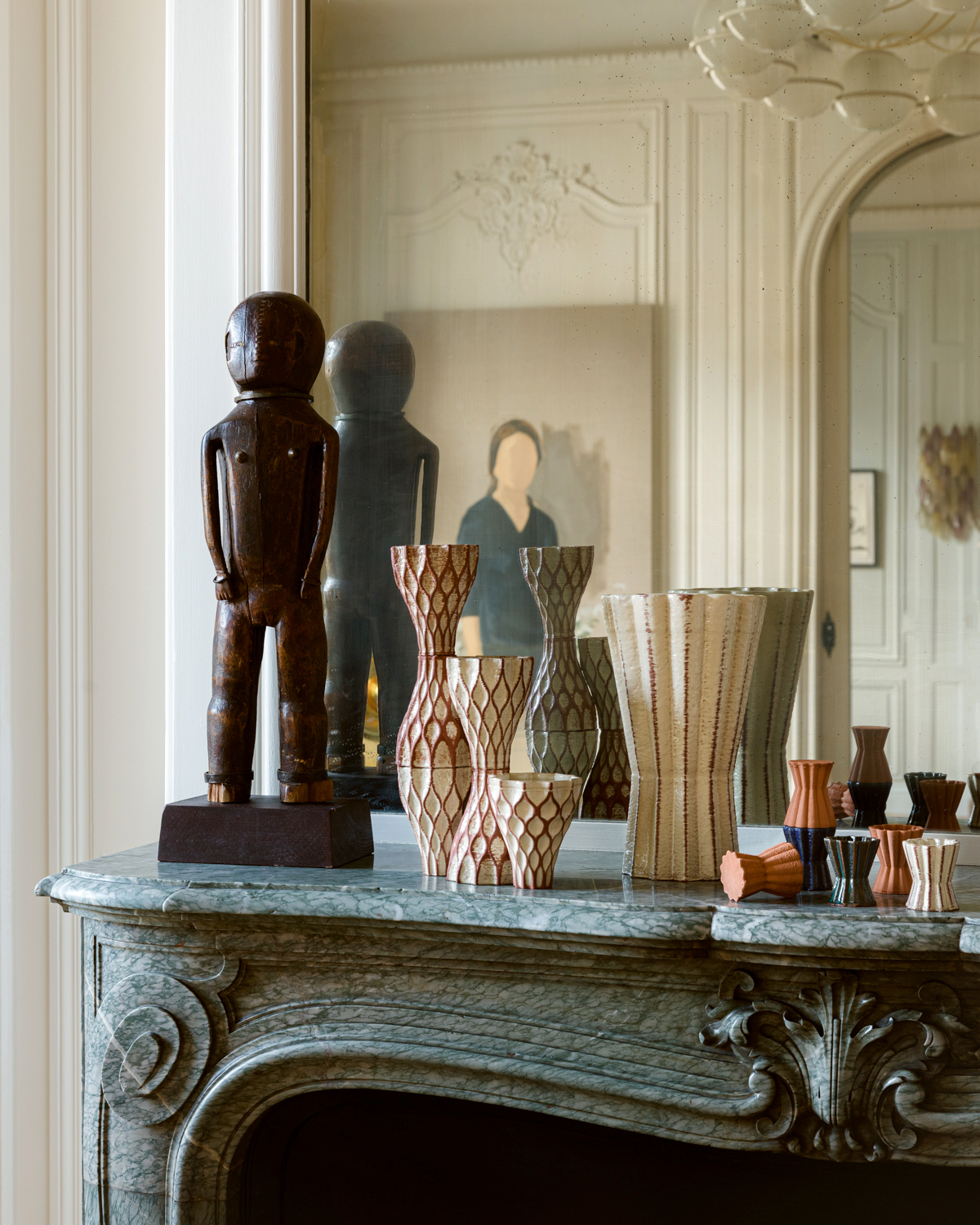
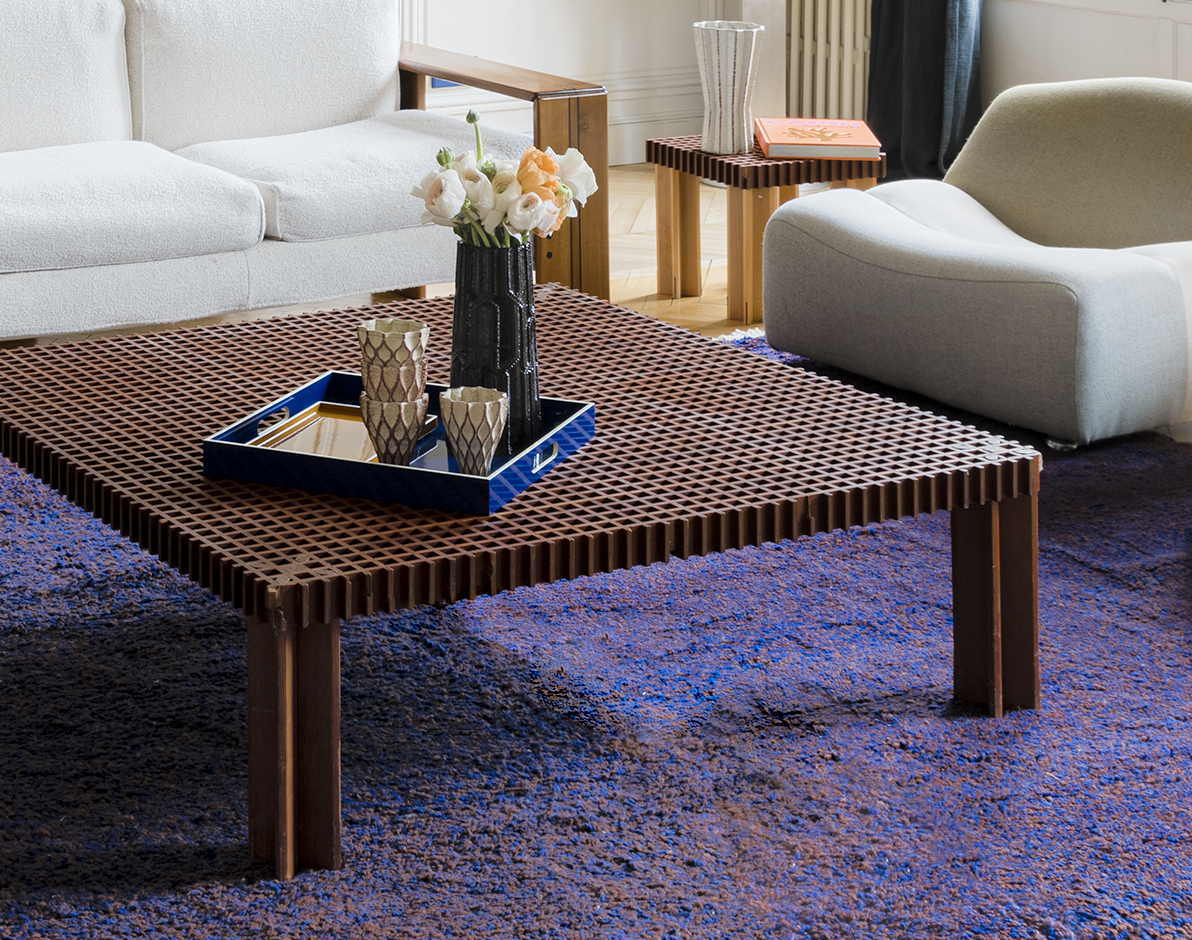
Tell me more about how Trame began. What was your ah-ha moment? And how and why did you come up with the initial idea of traveling to different areas with craft traditions?
Trame was cofounded by Adnane and I. My background is in infrastructure project finance, mainly in emerging markets, while his is in marketplace operations and marketing. We both grew up in Fez, Morocco, where there’s a long tradition of craftsmanship — our great-grandparents were craftsmen working with embroidery, silk, and pottery. In 2017, we noticed the ever-growing demand for handicraft, from Morocco in particular, but we were both stunned by the lack of innovation in the products made created those techniques. Ever since we were kids we saw the limited scope of these works, which always used the same patterns, colors, and materials. This issue seemed to be common to all craft regions. That’s why we decided to invite emerging designers to make cultural trips to these regions, to be inspired by the craft to create more contemporary, innovative pieces.
Can you share a few of the more remarkable moments or stories you remember from the development of your earlier collections in Morocco and Italy?
Adnane and I moved to Morocco in 2019 in order to oversee the development and production of the first collection, which we released in 2020. I took over the ceramics production while Adnane handled the textiles. Every day I would go to the workshop and I would be the first one to get there in the morning and the last one to leave at night. The first thing we’d do in the morning was to open the kiln, so it was always a moment of excitement as we discovered the glazed pieces — or of frustration, if some pieces were broken or the glazing didn’t come out as we expected. Craftsmanship is an exercise of patience and humility. You can’t rush things. Also, the bond created with the craftsmen is unique, and it makes everyone want to do better the next day.
In Italy during the reconnaissance trip to Calabria, I became good friends with the ceramist we were working with — even though I didn’t speak Italian — simply because he had stickers of Inter Milan players in the ’90s. I could name each and every one of them because I’m an Inter Milan fan! Football brought us together, even though one would have thought we had nothing in common. We still text using Google Translate after each big game.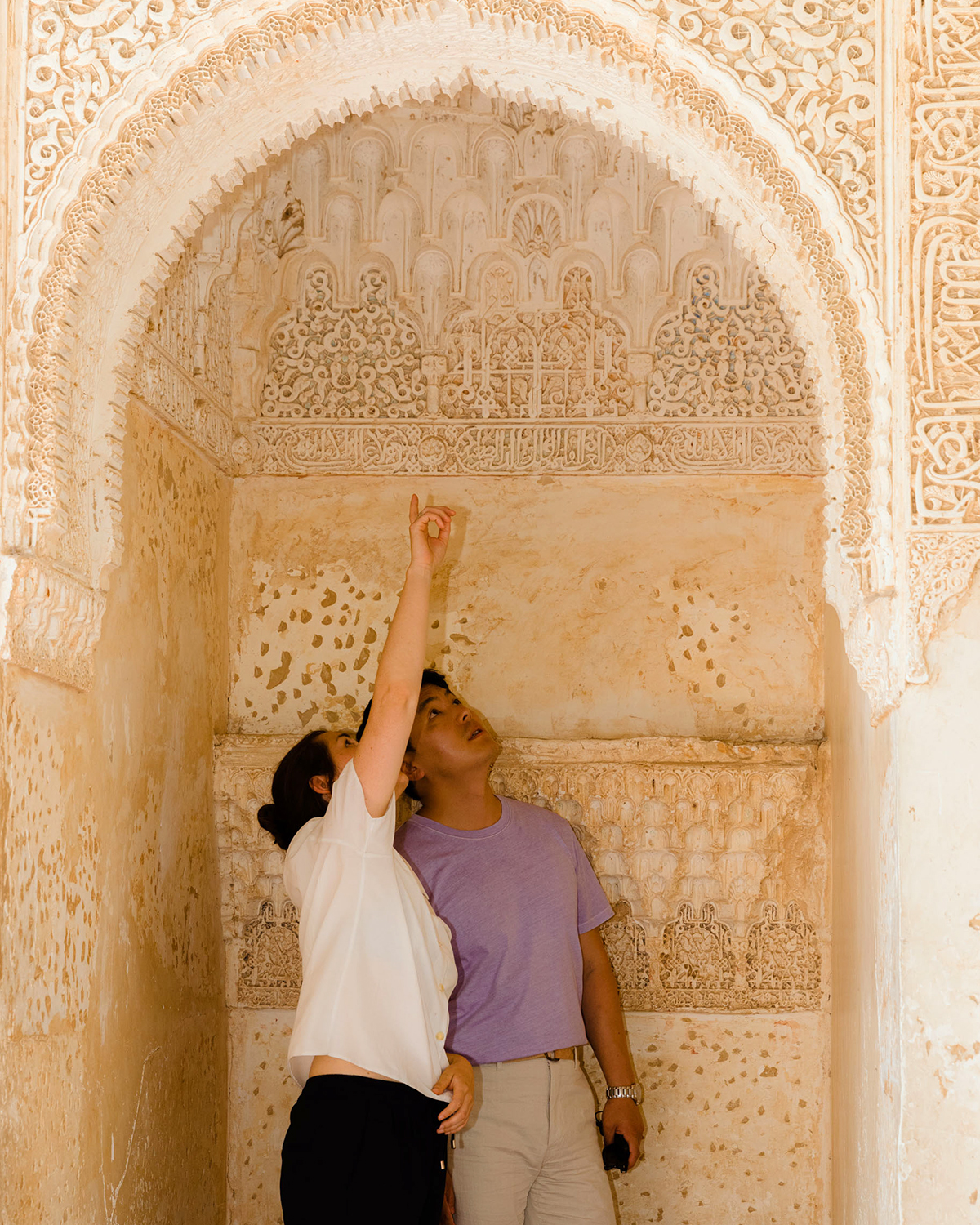
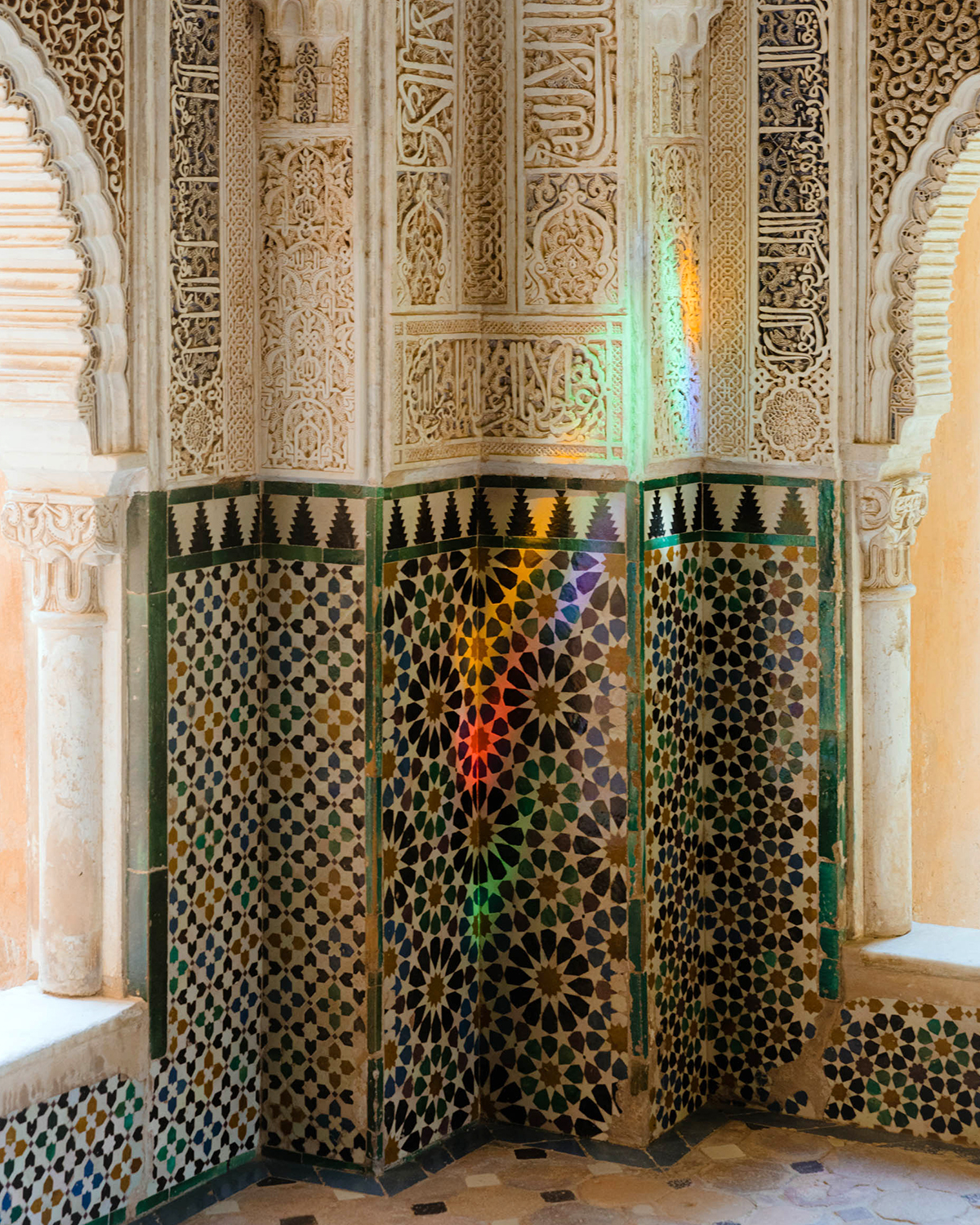
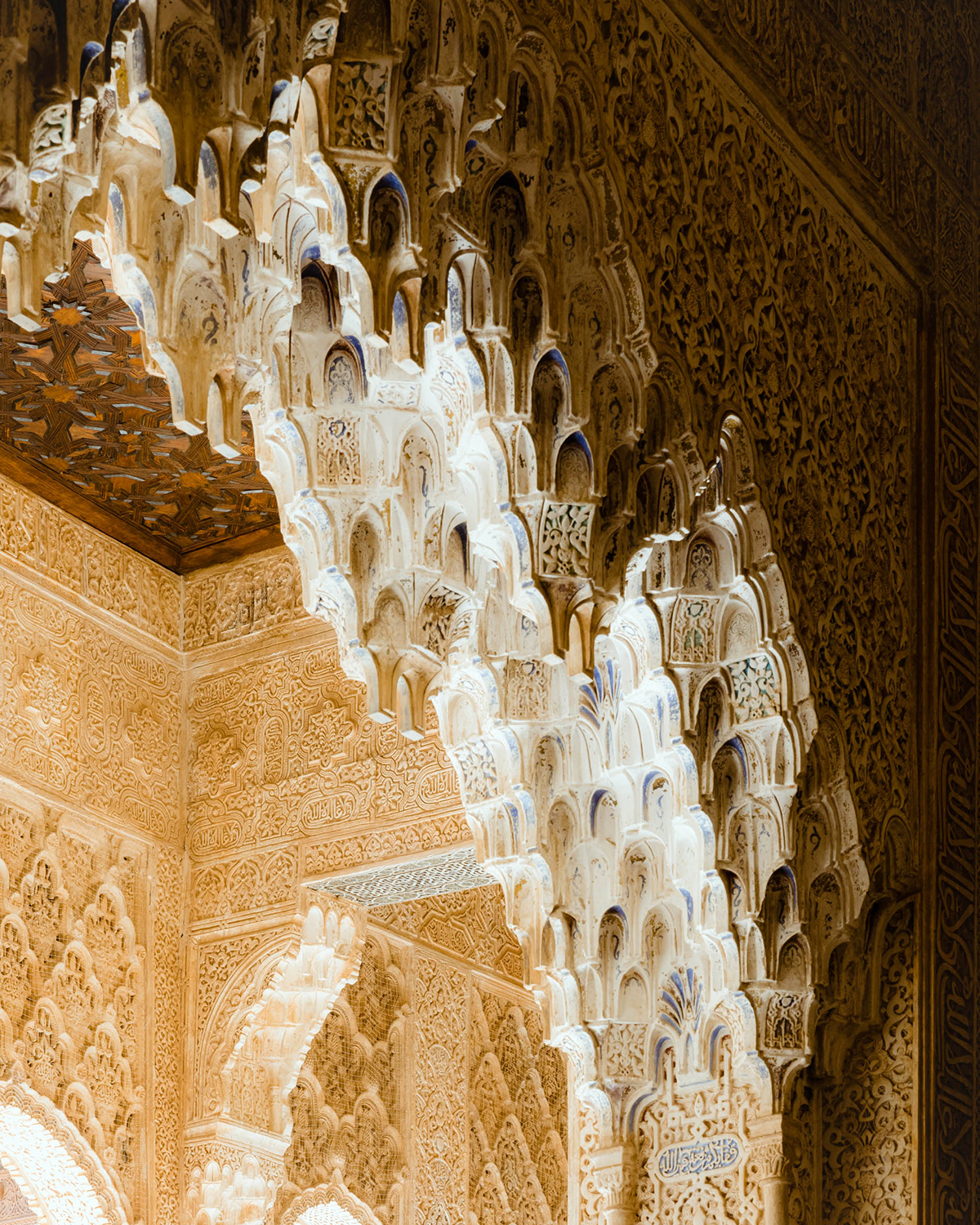
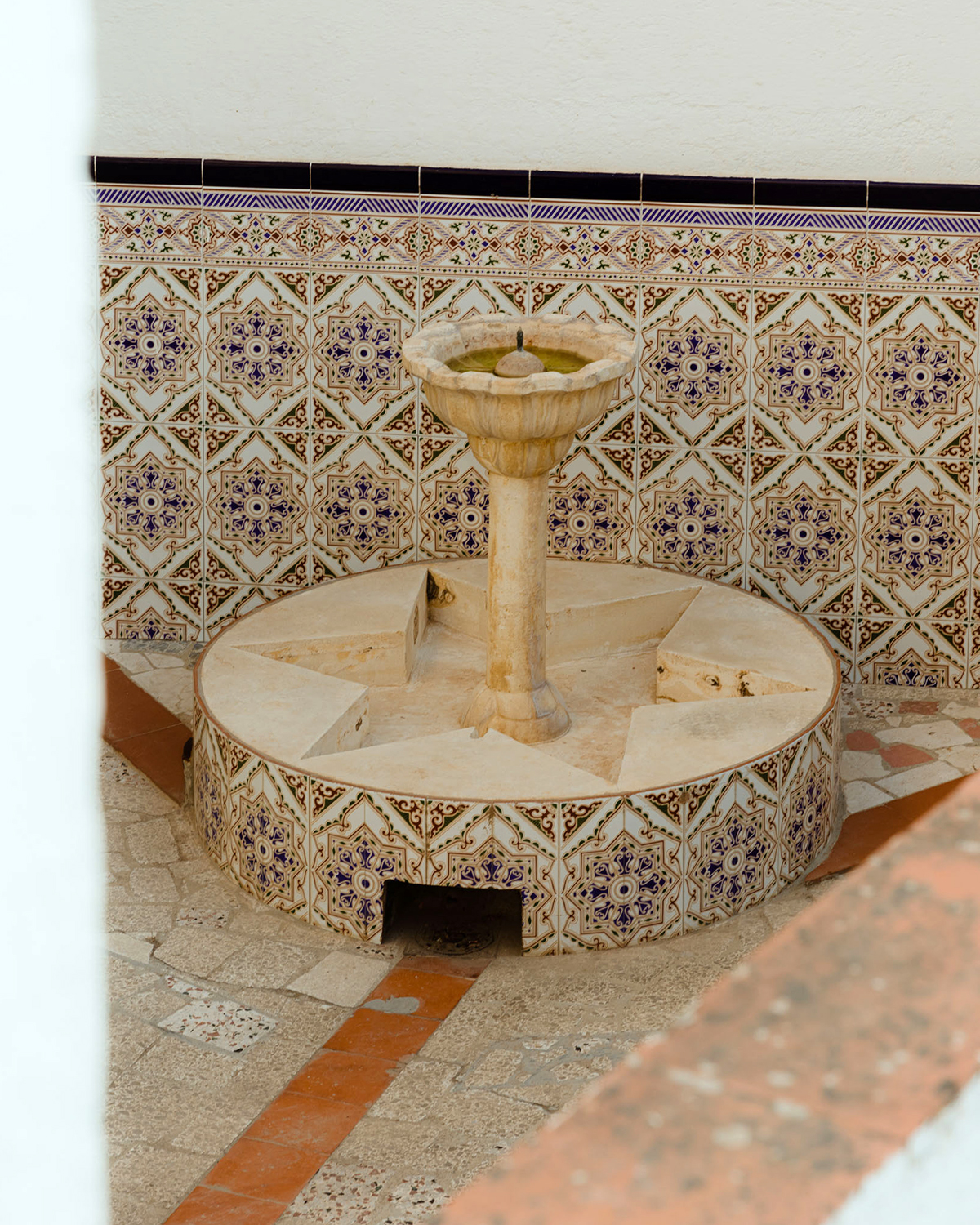
Can talk about the experience you and the designers had on the inspiration trip for this collection? At the Alhambra fortress in Granada?
We always wanted the designers to actually travel to the places that inspired every collection. Not only it was important for us to witness the craft and architecture firsthand, but it also made working with Trame more interesting. Few brands invest in a trip, and by doing so, we showed our commitment and we created common, cherished memories.
For this collection, we all met in Granada. It was a wonderful three days where we all stayed in the same villa overlooking the Alhambra. We visited the fortress with a local guide on a private tour. We walked around the city to find the best views. We even went to a Flamenco show. It was a truly beautiful time where, for most, it was their first visit to the Alhambra. During these trip, we discussed the craft, the architecture, and the history of the place. We always have a collegial approach to the products we want to explore.
Can you talk a bit about your feelings on craftsmanship, and explain how your definition of or relationship to craftsmanship is changing now that Trame is moving into 3-D printing? How did the company center craftsmanship in its mission before, and how will it maintain that relationship moving forward?
Since, as I mentioned, my great-grandparents were craftsmen, I’m deeply connected to ancestral savoir-faire, which I actually think is complementary to 3D printing. In our Alhambra.gcode collection, we 3D printed clay, but then hand-glazed it. It’s impressive how the hand-glazing revealed the uniqueness of every piece.
The combination between 3D printing and craftsmanship creates wonderful opportunities for designers and artisans to develop unexpected shapes and objects while favoring local production, short-cycle production, and a high level of customization. TRAME’s mission to explore and reinterpret manual techniques will be at the heart of a new innovative approach blending old traditions with digital fabrication.
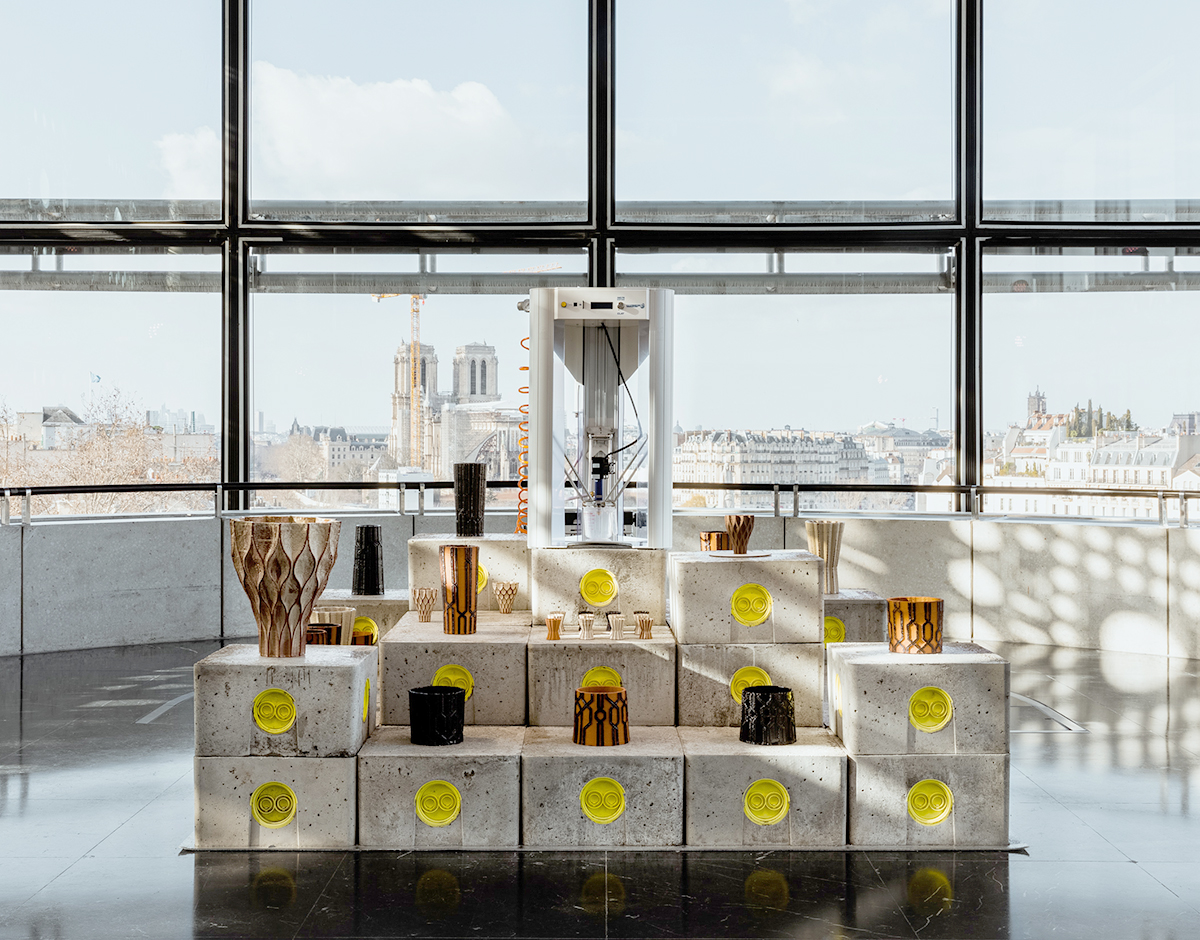
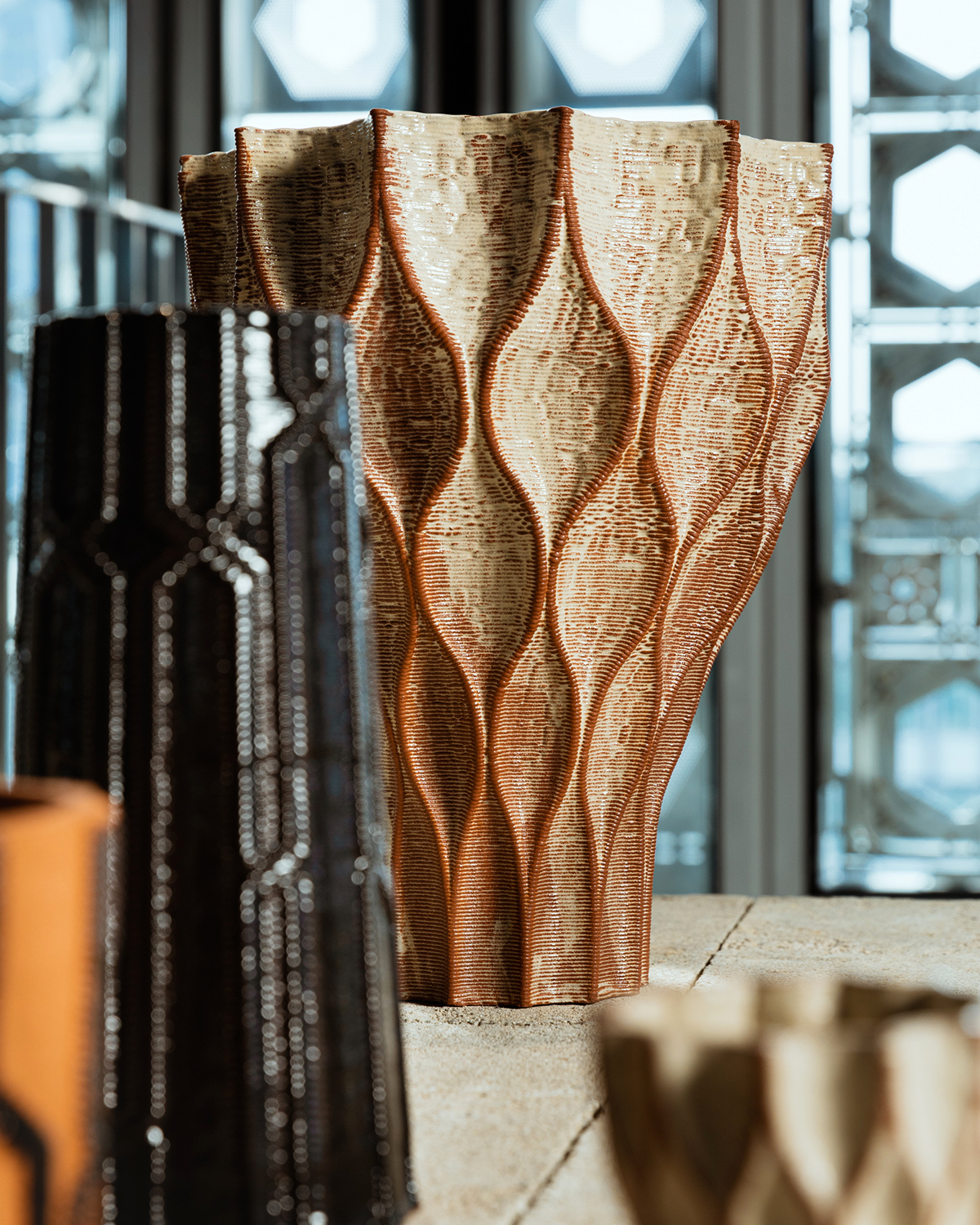
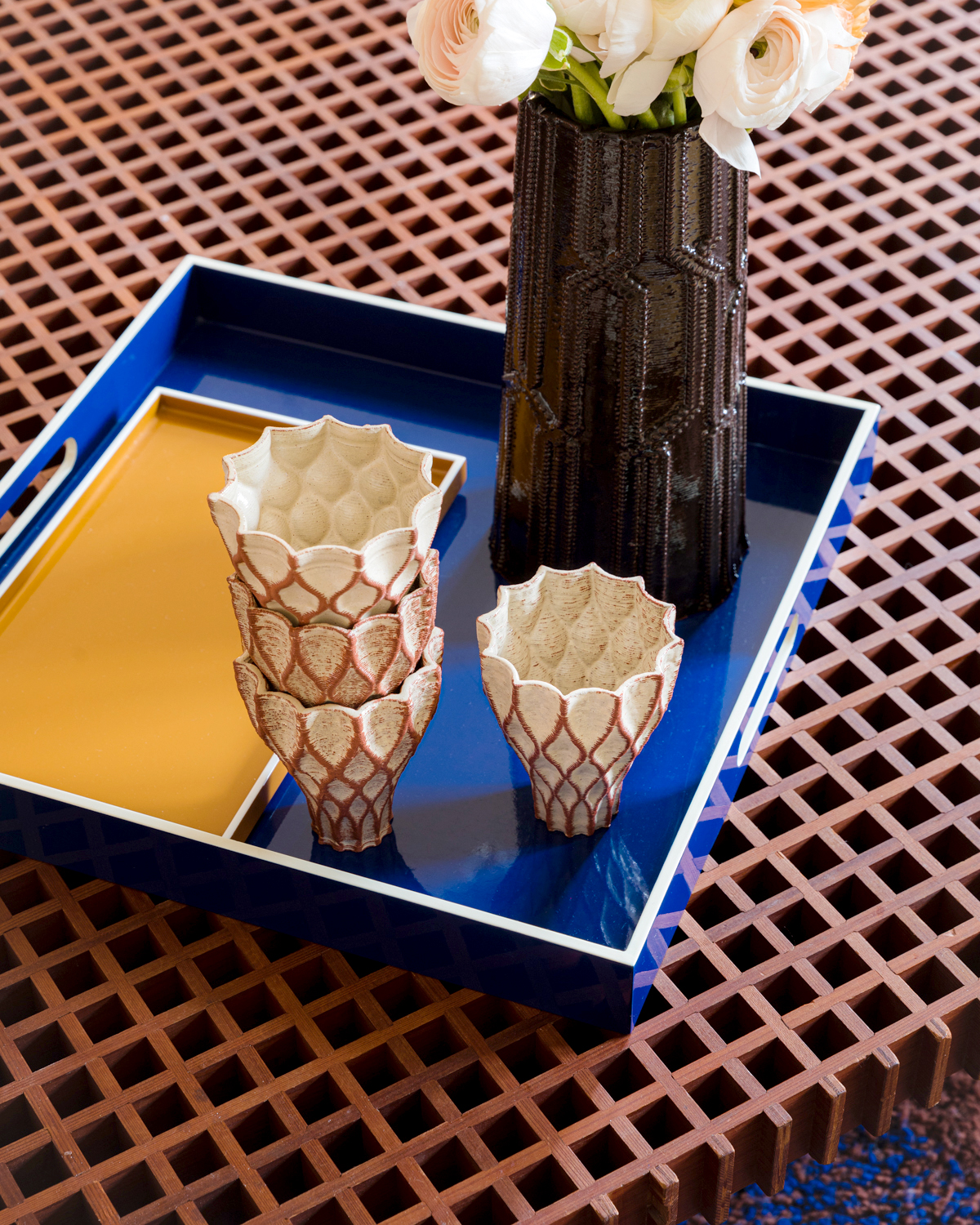 You’re positioning Trame at the vanguard of the 3D printing movement — can you share with our readers a bit of what you know about how 3D printing has evolved, as a manufacturing technology relative to the design world, in the past 20 years? And where you think the technology will go next?
You’re positioning Trame at the vanguard of the 3D printing movement — can you share with our readers a bit of what you know about how 3D printing has evolved, as a manufacturing technology relative to the design world, in the past 20 years? And where you think the technology will go next?
For the design world, 3D printing is not new. But for the wider audience, seeing 3D printing in clay and other natural materials is impressive, as it updates their opinion of the technology.
Ten to fifteen years ago, we were promised a digital fabrication revolution in the object field that didn’t happen. Early adopters were limited by high costs for 3D printers, spare parts, and inadequate materials until early patents expired. When that happened, more entrepreneurs and industrial companies started exploring and improving promising 3D printing technologies, such as FDM (Fusion Deposition Modeling). Today, the technology has moved ahead quickly, and we’re able to model and print complex objects in a wide array of beautiful materials. Also, more and more designers, such as Amandine David, are working at the crossroads between digital and traditional craftsmanship, which ensures a high quality, beautiful design product that is appealing to a wider audience. It’s also very interesting to now watch Wonmin Park, who’s known for making products in resin, experimenting with 3D clay printing.
This evolution in the quality and desirability of objects made with 3D-printing techniques is attracting attention from creatives and brands in all sectors, from high fashion to sneakers, and from home decor to accessories. Adidas launched their Futurecraft shoes that can be customized to accommodate each foot’s needs; Dior built a complete pop-up store with 3D printing techniques in just 120 hours!
I would also love to hear you break down the facts on how 3D printing is helping lower the carbon footprint of the design industry.
3D printing farms worldwide will allow for the decentralization of production — a model that’s not opposed to craftsmanship, but rather to the centralized industrial production the world has relied on for the last century. That means that in the future, we’ll be able to produce physical products only when and where we need them. 3D printing can be done closer to the locations of raw material suppliers and/or end-customers, which makes supply chains more localized and reduces freight transportation and the associated CO2 emissions. The pressure on global logistics networks could ease, as less cargo would be traveling between Asia, Europe, and the US.
Also, additive manufacturing technology uses only the exact amount of material needed for an object, and only when it’s needed. That’s compared to traditional manufacturing in which, in most cases, shapes are formed from large blocks, creating a lot of material waste, and production is done in large batches, increasing the risks that finished products could remain unsold or unused. It’s a much more efficient method of production.
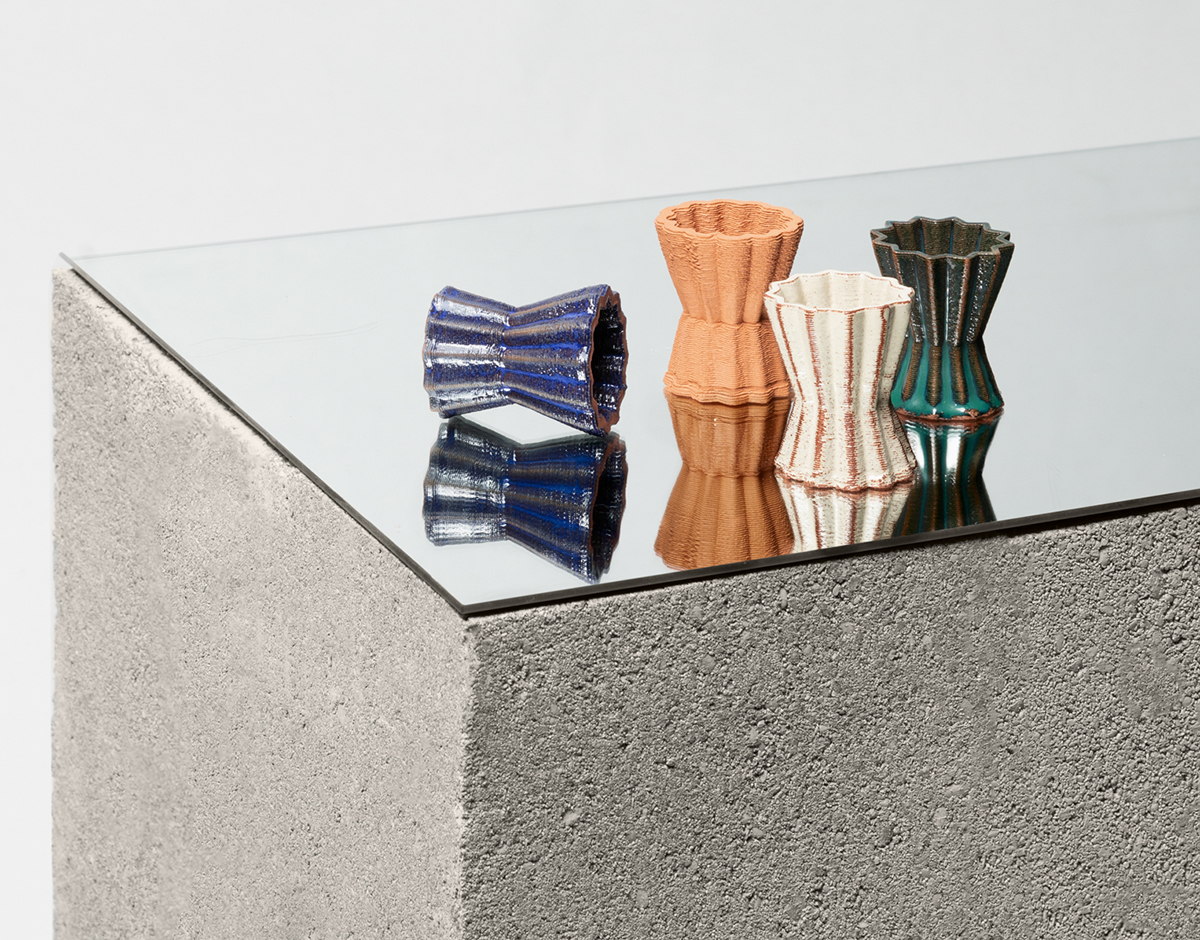
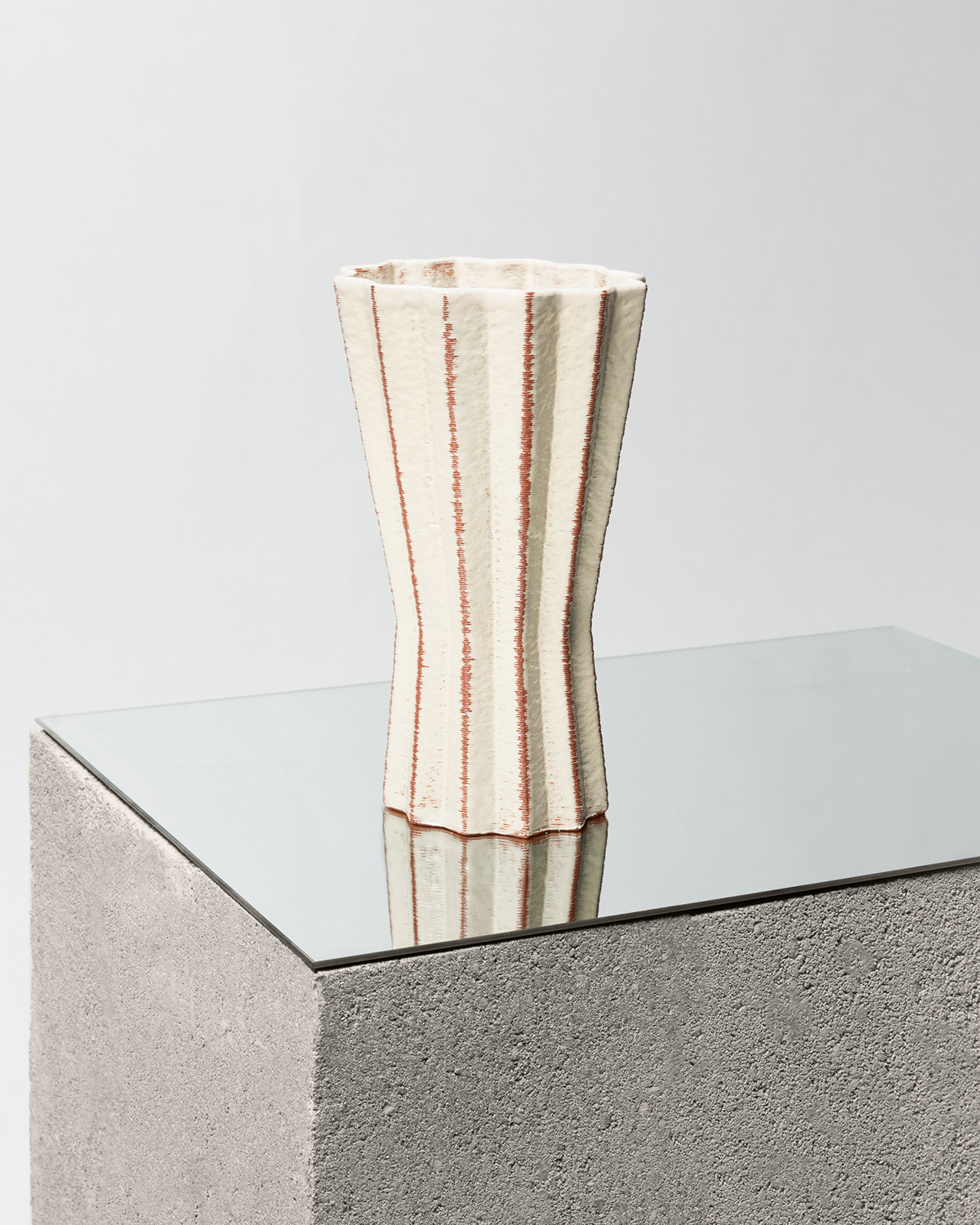
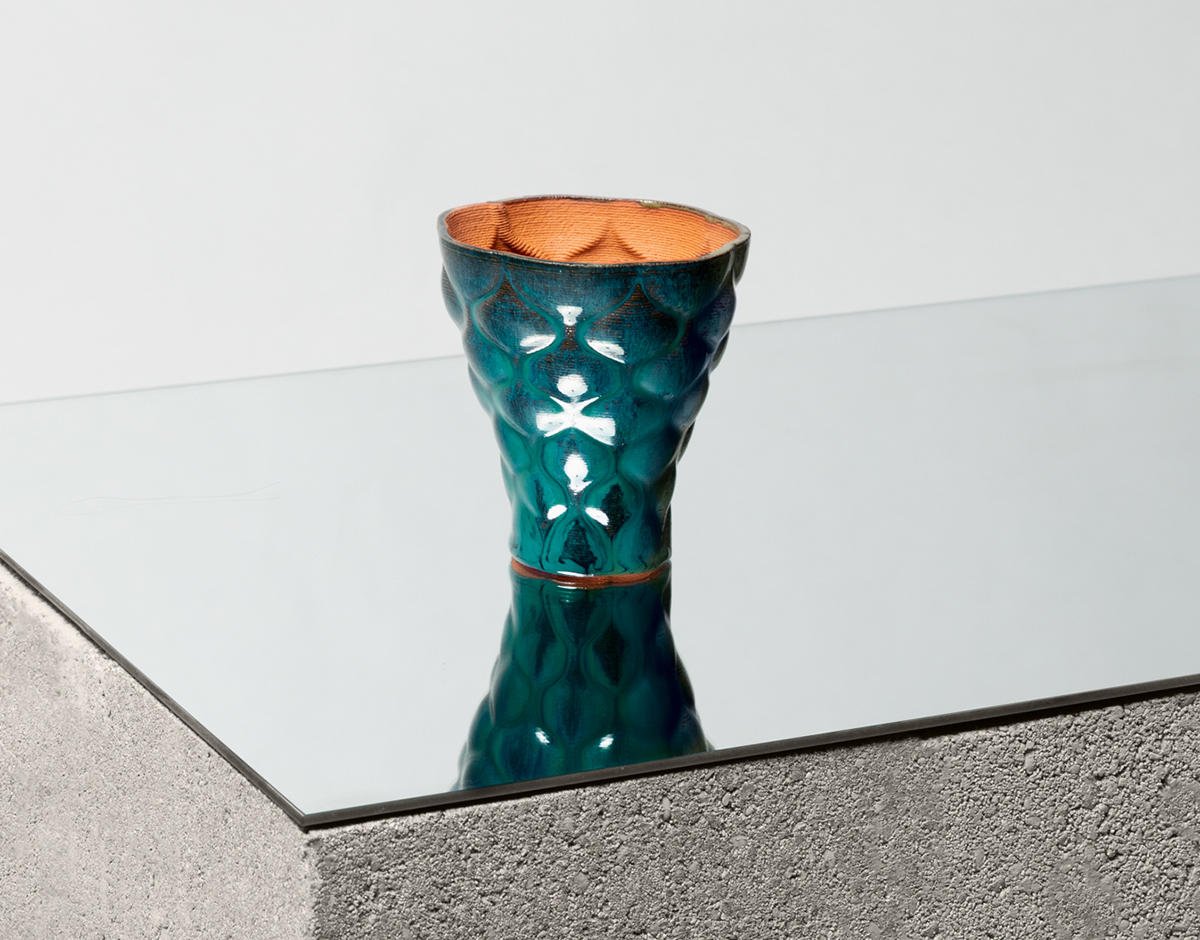
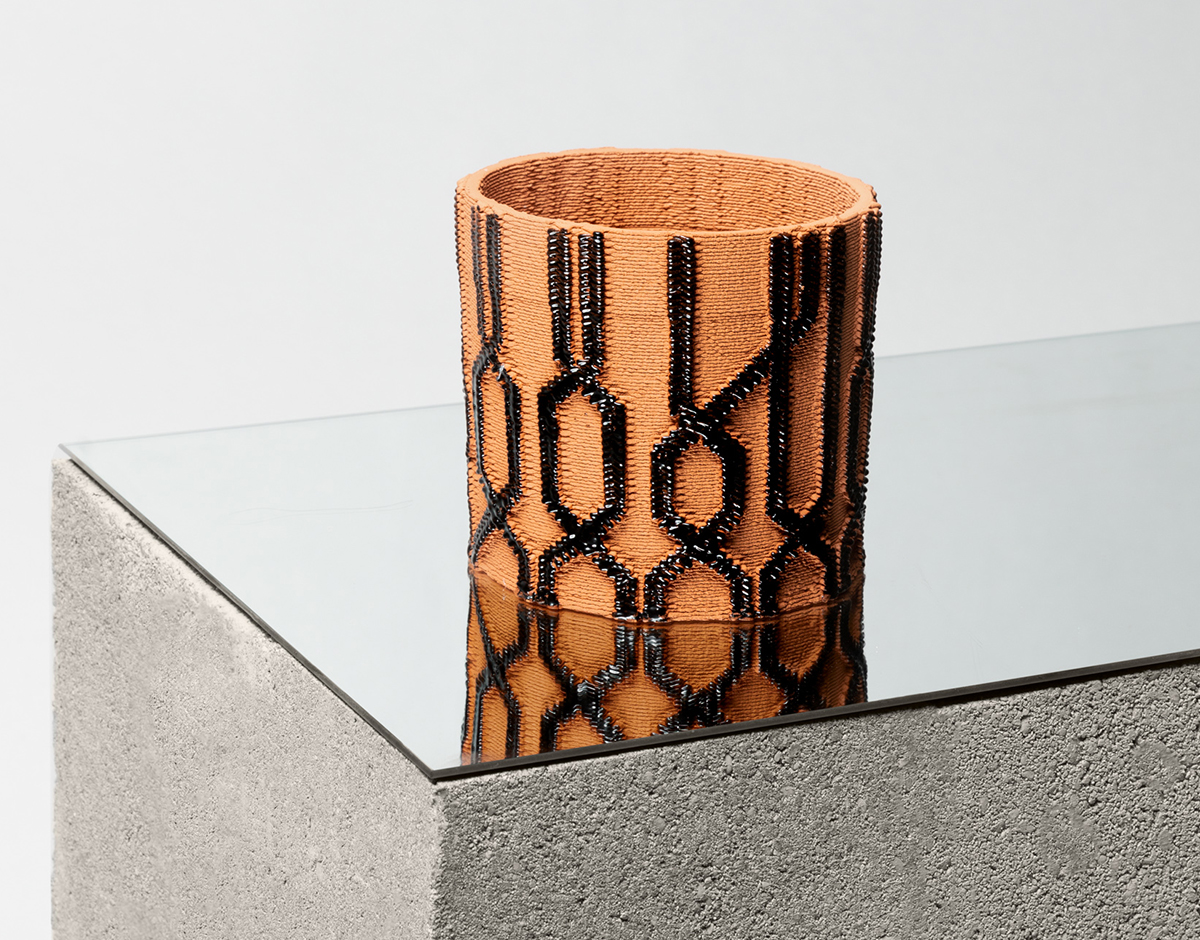 When I first learned of your plans I couldn’t help but think of all the brands in the past who wanted to decentralize their manufacturing (whether in 3D printing or more traditional methods) but who never managed to make it happen. What are the roadblocks to doing so, and how do you intend to overcome them?
When I first learned of your plans I couldn’t help but think of all the brands in the past who wanted to decentralize their manufacturing (whether in 3D printing or more traditional methods) but who never managed to make it happen. What are the roadblocks to doing so, and how do you intend to overcome them?
Digital fabrication is reaching a maturity point where affordability, quality, and desirability are converging. This creates economic opportunities for industrial manufacturers, and also for new players. 3D printing technologies evolved rapidly over the last 5 years, and the pandemic accelerated that trend, as it exacerbated the pressure on supply chains all over the world. Big players from different industries shifted from using 3D printing technologies for prototyping to using them for mass production. As a result, the cost of acquiring and adapting different types of machines is becoming more and more affordable. Also, the timeframe at which a high-quality object can be designed, customized, and printed is continuously decreasing.
This first 3D printed collection consists of vessels — are you hoping to eventually branch out beyond small accessories?
Our 3D printed collections will focus on decorative objects made of beautiful materials such as clay, but we also aim to branch into digital weaving in order to produce a large assortment of textiles. Thanks to new methods, weavers and designers can push boundaries by generating complex patterns and fabrics that are built line by line, with the possibility to change the yarns and adapt the patterns while weaving. Also, we have the ambition to use recycled materials. Today, we can turn plastic, paper, wood and other material waste into 3D filaments to be used for printing new objects.
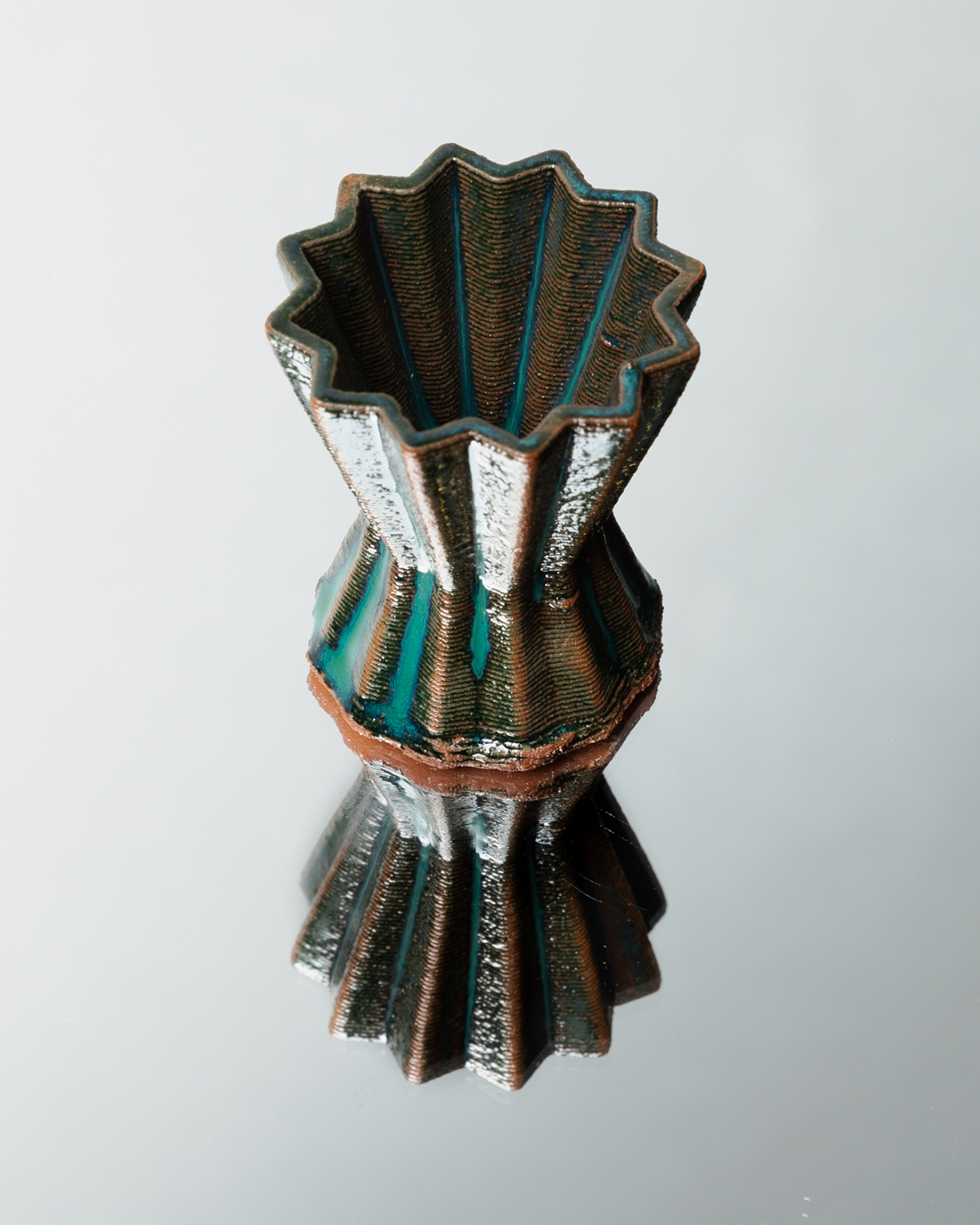
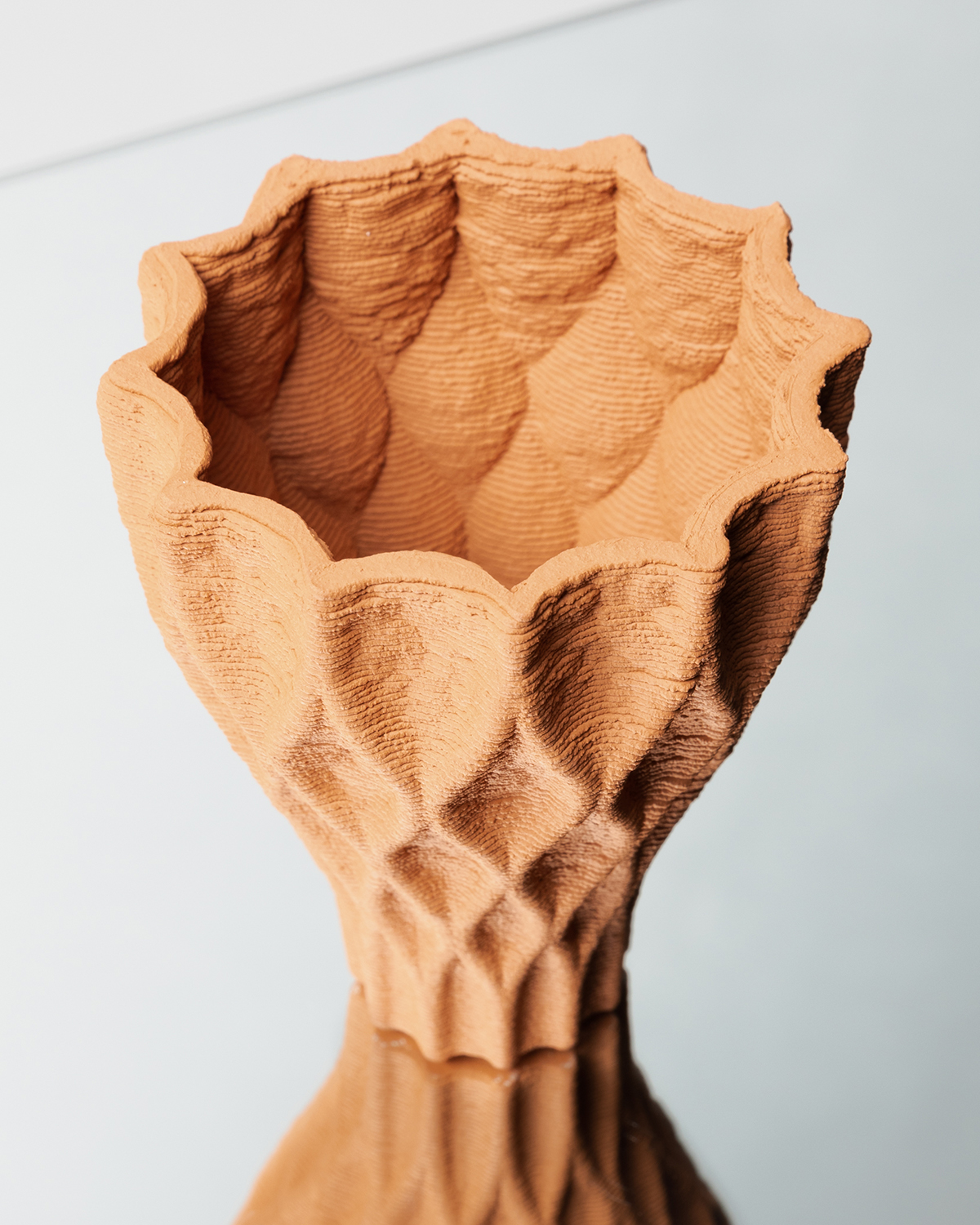
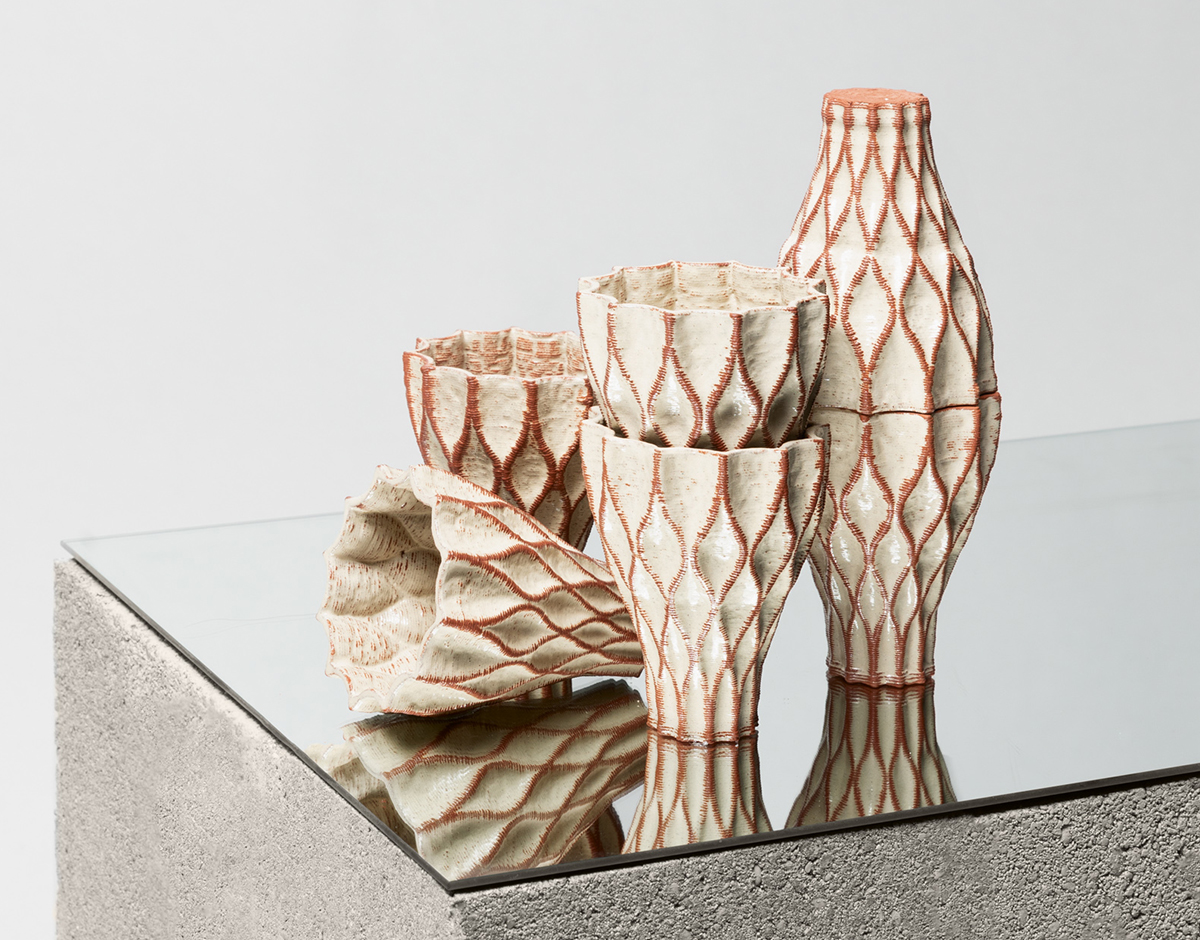 Who are some of the other designers you admire who are working at this intersection of 3D printing and design right now, and why?
Who are some of the other designers you admire who are working at this intersection of 3D printing and design right now, and why?
First and foremost Arthur Mamou-Mani, a parametric architect who has accomplished a lot, including projects that have reached a wider audience, like the Galaxia Temple at Burning Man. I’m very admiring of all the work he does with his architecture studio, but also with his digital fabrication lab in London, which is where we prototyped our 3D printed collection.
The work of Neri Oxman is also astonishing. In 2014, she and her team developed a 3D printer for optically transparent glass! Then I can’t help but think of Christophe Guberan, who developed, in collaboration with MIT, a new technique of printing objects in a 3D space within a gel support. This allows for higher quality printing, on a larger scale, with a wider variety of materials.
In moving into this 3D printing model, will the spirit and aesthetic of Trame stay the same? The products really did have a handmade feel before, aesthetically speaking, so I’m curious how you intend to maintain that and avoid things starting to look the same because they’re all made in this same way.
Through our first 3D printed collection, we’ve already proven that the spirit and aesthetic of Trame remains the same! All of our products do have a handmade feel, and our fantastic artistic director, Valentina Ciuffi, makes sure that all of our pieces are infused with our spirit. ◆